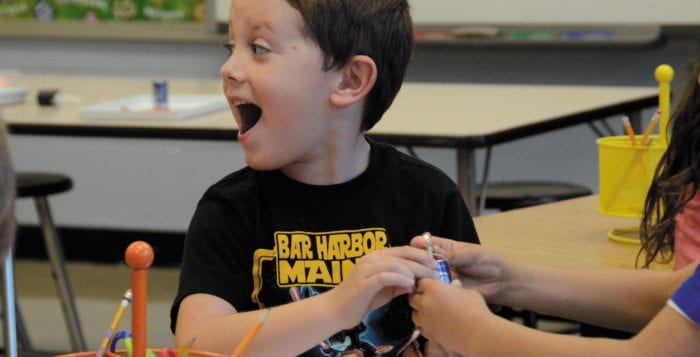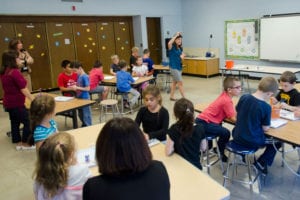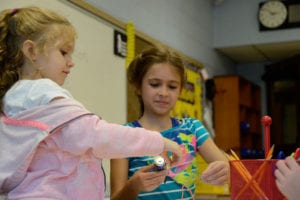By Mallie Jane Kim
New York Regents Exam scores can no longer lower student course grades in Three Village Central School District, after the school board unexpectedly resurrected a policy that directs teachers to only include the scores if they help a student’s GPA.
“I believe we have reached a point in time where it makes sense to let these grades help our kids and let that be their incentive to do well,” said board President Susan Rosenzweig, in bringing the issue back to the table at an Oct. 9 board meeting. “But if it doesn’t, their academic work through the course of the year should stand toward their final grade.”
Just before Regents exams began last June, a new wave of parent advocacy led the board to reconsider the so-called “Do No Harm” policy, but at that time trustees reaffirmed their November vote to include the scores at 10% — down from about 12% before the pandemic.
After the last Regents season, though, students did report lower grades due to exam scores. Superintendent of Schools Kevin Scanlon called out the physics Regents as one that particularly impacted student course grades.
“Teachers and administrators always want to see the students do their best on whatever we give them, and want to give them the best opportunity,” Scanlon said, adding that some comparable districts do not include the scores in final grades since the state does not require it. “It’s not a perfect system.”
This decision comes as the state’s Education Department is considering a new vision for graduation requirements, which would provide alternate means of demonstrating proficiency, rather than requiring the exams for everyone.
But district administrators made clear the exams themselves are not a waste of effort.
“The Regents Exams are extremely important to us as far as the data we get,” said Brian Biscari, assistant superintendent for educational services. “They are one of the only tools of standardization that we have that we can look at our instructional program and see how our kids are doing.”
Celebrating cellphone policy success
The district’s effort to reduce the use of cellphones at school is showing positive results, according to Scanlon. He indicated the culture within the junior high schools, in particular, is improving.
“Seeing students without their faces buried in phones and literally having conversations at cafeteria tables is a real heart boost for everyone,” he said. “We’ve sort of turned a corner on this.”
High school students have welcomed the policy, as well, according to senior Hazel Cohas, Ward Melville High School’s student representative to the board.
“In the past, there have been policies that have faced a lot of backlash,” she shared, pointing specifically to a vandalism-prevention policy instituted last year requiring students to carry their IDs and swipe them to use restrooms. But on limiting cellphone use, she hasn’t heard complaints: “I haven’t heard anything, and I think it’s going well.”
Bullying complaints have seen a “very large decline” from this time last year, Scanlon reported, and particularly those associated with social media.
Scanlon urged vigilance, though, because it is still early in the school year and since “students are very smart,” some may look for ways around the policy.
Junior high to middle school preview
Three Village junior high schools will get new names in fall 2025, officially transitioning to Paul J. Gelinas Middle School and Robert Cushman Murphy Middle School, both comprising sixth through eighth grades.
More will shift than just the name and grade makeup, according to Biscari, who called the focus on transition supports a “comprehensive philosophical change in our middle school model.”
The most significant change is the addition of a standalone nine-minute advisory period to allow a specific time for the Pledge of Allegiance and announcements, as well as for activities to build social skills, social emotional learning and relationships. The schedule can also shift to allow for an extended advisory period on days where the student body participates in special activities, like on Unity Day.
According to the presentation by junior high principals, Corinne Keane (PJG) and Michael Jantzen (RCM), advisory groups will be heterogeneous, allowing students who would normally be in different level classes to be together.
“They start to forge connections with people — with kids, with staff members — that are hopefully making them feel a little bit more connected to their school and their environment,” explained Keane, who said area middle schools she’s spoken to have implemented the advisory period concept. “It’s a cornerstone of middle school culture.”
Sixth grade will operate under “teaching teams,” where a cohort of students will all be assigned the same set of teachers in core academic subjects. This way, teachers can better collaborate to help students succeed, and parents can meet with all of their child’s core teachers at once.
Students will also be able to spread requirements for technology, art, and family and consumer science over three years instead of two, allowing space for an additional elective each year.
The schools are already collaborating with elementary schools to aid in the transition of two grade levels up to next year’s middle schools, and they are looking ahead to additional ways to bridge the gap between middle school and high school. One part of that plan is to allow for some dances, celebrations and a theme-park field trip to be joint affairs with both eighth graders from the middle schools and ninth graders from the high school.
“We want to make sure that the transitions are as smooth as they can be,” said Jantzen, adding that junior high administrators will continue talking with staff from the other schools to continue to fine-tune transition supports. “We are taking into account all concerns.”
Changing to middle schools, though, means saying goodbye to a seventh-through-ninth-grade junior high model that has been around Three Village for nearly 60 years. The principals want to use this year’s junior high yearbooks to recognize that.
“We’re both looking to use the yearbook as a tool to commemorate,” Keane said. “In 50 years when someone picks up the yearbook, they get the sense that this was the year — this was the last year as a junior high school.”








